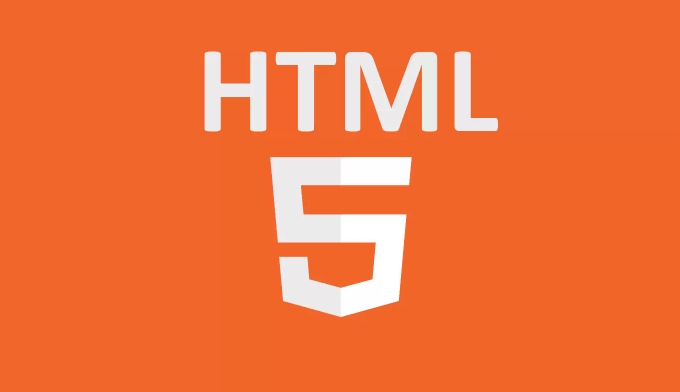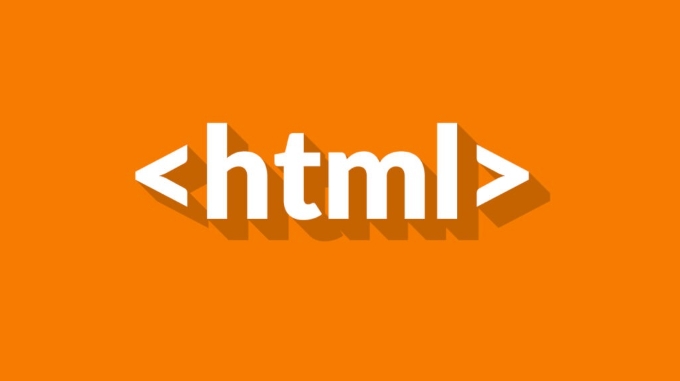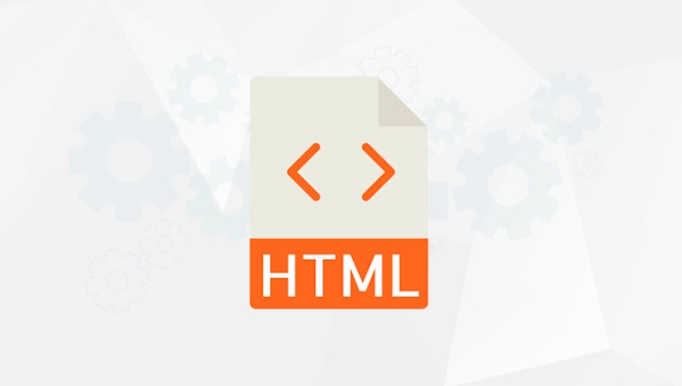Creating responsive HTML messages requires the following methods: 1. Ensure compatibility with inline styles; 2. Replace Flexbox or Grid with table layout; 3. Set viewport tags, fixed-width containers, picture max-width, and mobile adaptation with table simulation buttons; 4. Previews must be tested on multiple clients and real devices. This can improve the display stability and user experience on different devices and email clients.

Creating a responsive HTML message is indeed a bit challenging because the support for HTML and CSS is chaotic across major mail clients. But if your goal is to make emails appear normally on different devices, there are some practical ways to follow.

Using Inline Styles
Most mail clients have limited support for <style></style> tags, or even completely ignored. To ensure that your style can be applied correctly, it is best to write CSS directly in the style attribute of the tag.
for example:

<table border="0" cellpadding="0" cellpacing="0" width="100%">
<tr>
<td style="font-family: Arial, sans-serif; font-size: 16px; color: #333;">
This is a text with a stable style.
</td>
</tr>
</table>Although it is a bit troublesome to write, it is a key step to ensure compatibility.
Table-based Layout
Responsive web pages often use Flexbox or Grid layouts, but these are basically unavailable in HTML mail. Instead, the ancient <table> layout is replaced.

- Clear table structure and strong compatibility
- A certain degree of adaptability can be achieved by setting the width to a percentage
To give a simple example:
<table width="100%" border="0" cellpacing="0" cellpadding="0">
<tr>
<td width="50%" style="padding: 10px;">Left content</td>
<td width="50%" style="padding: 10px;">Right content</td>
</tr>
</table>This way, it can maintain a good layout effect even in the old version of Outlook.
Mobile adaptation skills
Although you cannot use media queries to be truly "responsive", you can do some basic optimizations to make the mobile experience better:
Set the viewport meta tag (although some email clients may ignore):
<meta name="viewport" content="width=device-width, initial-scale=1.0">
Use a fixed width container, for example, the maximum width is set to 600px, centered to display
Image setting
max-width: 100%to ensure that the screen does not exceedButtons are simulated using
<table> , notCSSYou can also define some styles for mobile devices. Although not all clients support them, they can at least improve the reading experience of some users.
Testing and previewing are essential
The most troublesome thing about HTML emails is that "it looks OK" does not mean "everyone can see the correct effect." So be sure to test it!
- Preview in multiple mail clients (such as Gmail, Outlook, Apple Mail, Yahoo Mail, etc.)
- Use tools such as Litmus or Email on Acid
- Send it to yourself or colleagues to see the results on real devices
The test step cannot be skipped, otherwise it is easy to have an embarrassing situation of "only after sending it out, you will find that the layout is inconsistent".
Basically that's it. HTML email development is not as free as web pages, but as long as you master the routine, you can also create stable and beautiful email templates.
The above is the detailed content of How to create a responsive HTML email?. For more information, please follow other related articles on the PHP Chinese website!

Hot AI Tools

Undress AI Tool
Undress images for free

Undresser.AI Undress
AI-powered app for creating realistic nude photos

AI Clothes Remover
Online AI tool for removing clothes from photos.

Clothoff.io
AI clothes remover

Video Face Swap
Swap faces in any video effortlessly with our completely free AI face swap tool!

Hot Article

Hot Tools

Notepad++7.3.1
Easy-to-use and free code editor

SublimeText3 Chinese version
Chinese version, very easy to use

Zend Studio 13.0.1
Powerful PHP integrated development environment

Dreamweaver CS6
Visual web development tools

SublimeText3 Mac version
God-level code editing software (SublimeText3)

Hot Topics
 How do I stay up-to-date with the latest HTML standards and best practices?
Jun 20, 2025 am 08:33 AM
How do I stay up-to-date with the latest HTML standards and best practices?
Jun 20, 2025 am 08:33 AM
The key to keep up with HTML standards and best practices is to do it intentionally rather than follow it blindly. First, follow the summary or update logs of official sources such as WHATWG and W3C, understand new tags (such as) and attributes, and use them as references to solve difficult problems; second, subscribe to trusted web development newsletters and blogs, spend 10-15 minutes a week to browse updates, focus on actual use cases rather than just collecting articles; second, use developer tools and linters such as HTMLHint to optimize the code structure through instant feedback; finally, interact with the developer community, share experiences and learn other people's practical skills, so as to continuously improve HTML skills.
 How do I use the element to represent the main content of a document?
Jun 19, 2025 pm 11:09 PM
How do I use the element to represent the main content of a document?
Jun 19, 2025 pm 11:09 PM
The reason for using tags is to improve the semantic structure and accessibility of web pages, make it easier for screen readers and search engines to understand page content, and allow users to quickly jump to core content. Here are the key points: 1. Each page should contain only one element; 2. It should not include content that is repeated across pages (such as sidebars or footers); 3. It can be used in conjunction with ARIA properties to enhance accessibility. Usually located after and before, it is used to wrap unique page content, such as articles, forms or product details, and should be avoided in, or in; to improve accessibility, aria-labeledby or aria-label can be used to clearly identify parts.
 How do I create a basic HTML document?
Jun 19, 2025 pm 11:01 PM
How do I create a basic HTML document?
Jun 19, 2025 pm 11:01 PM
To create a basic HTML document, you first need to understand its basic structure and write code in a standard format. 1. Use the declaration document type at the beginning; 2. Use the tag to wrap the entire content; 3. Include and two main parts in it, which are used to store metadata such as titles, style sheet links, etc., and include user-visible content such as titles, paragraphs, pictures and links; 4. Save the file in .html format and open the viewing effect in the browser; 5. Then you can gradually add more elements to enrich the page content. Follow these steps to quickly build a basic web page.
 How do I create checkboxes in HTML using the element?
Jun 19, 2025 pm 11:41 PM
How do I create checkboxes in HTML using the element?
Jun 19, 2025 pm 11:41 PM
To create an HTML checkbox, use the type attribute to set the element of the checkbox. 1. The basic structure includes id, name and label tags to ensure that clicking text can switch options; 2. Multiple related check boxes should use the same name but different values, and wrap them with fieldset to improve accessibility; 3. Hide native controls when customizing styles and use CSS to design alternative elements while maintaining the complete functions; 4. Ensure availability, pair labels, support keyboard navigation, and avoid relying on only visual prompts. The above steps can help developers correctly implement checkbox components that have both functional and aesthetics.
 How do I minimize the size of HTML files?
Jun 24, 2025 am 12:53 AM
How do I minimize the size of HTML files?
Jun 24, 2025 am 12:53 AM
To reduce the size of HTML files, you need to clean up redundant code, compress content, and optimize structure. 1. Delete unused tags, comments and extra blanks to reduce volume; 2. Move inline CSS and JavaScript to external files and merge multiple scripts or style blocks; 3. Simplify label syntax without affecting parsing, such as omitting optional closed tags or using short attributes; 4. After cleaning, enable server-side compression technologies such as Gzip or Brotli to further reduce the transmission volume. These steps can significantly improve page loading performance without sacrificing functionality.
 How has HTML evolved over time, and what are the key milestones in its history?
Jun 24, 2025 am 12:54 AM
How has HTML evolved over time, and what are the key milestones in its history?
Jun 24, 2025 am 12:54 AM
HTMLhasevolvedsignificantlysinceitscreationtomeetthegrowingdemandsofwebdevelopersandusers.Initiallyasimplemarkuplanguageforsharingdocuments,ithasundergonemajorupdates,includingHTML2.0,whichintroducedforms;HTML3.x,whichaddedvisualenhancementsandlayout
 How do I use the element to represent the footer of a document or section?
Jun 25, 2025 am 12:57 AM
How do I use the element to represent the footer of a document or section?
Jun 25, 2025 am 12:57 AM
It is a semantic tag used in HTML5 to define the bottom of the page or content block, usually including copyright information, contact information or navigation links; it can be placed at the bottom of the page or nested in, etc. tags as the end of the block; when using it, you should pay attention to avoid repeated abuse and irrelevant content.
 How do I embed video in HTML using the element?
Jun 20, 2025 am 10:09 AM
How do I embed video in HTML using the element?
Jun 20, 2025 am 10:09 AM
To embed videos in HTML, use tags and specify the video source and attributes. 1. Use src attributes or elements to define the video path and format; 2. Add basic attributes such as controls, width, height; 3. To be compatible with different browsers, you can list MP4, WebM, Ogg and other formats; 4. Use controls, autoplay, muted, loop, preload and other attributes to control the playback behavior; 5. Use CSS to realize responsive layout to ensure that it is adapted to different screens. Correct combination of structure and attributes can ensure good display and functional support of the video.






